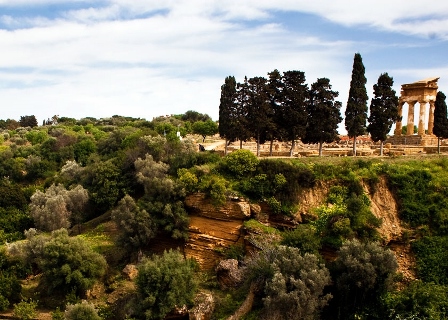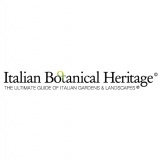
WTI Magazine #85 2016 November 21
Author : Italian Botanical Heritage Translation by:
The Kolymbetra Garden (greek word for a type of pool used in Roman times for aquatic sports) is an archaeological site of great historical, scenic, agricultural and natural importance, located in the Valley of the Temples in Agrigento. In 1999, the regional government has entrusted it to FAI (Italian Fund for the Environment) in free concession for a period of 25 years, ending the situation of abandonment of the last decades of the twentieth century. The restoration of the vegetation and structure promoted by FAI led to the discovery of some hidden numerous testimonies. In 2012 it was among the 10 finalists of the competition "The Most Beautiful Park in Italy."
THE VEGETATION
The Kolymbetra Garden consists of 5 areas: citrus, almond-olive grove, scrubland, riparian vegetation, rocky vegetation.
The citrus grove represents the 29% of the park, and consists of bitter orange trees, varieties of sweet oranges, mandarins, lemons, grapefruit and clementine; there can be found also mulberries, plums, medlar, pear and figs.
The almond-olive grove is located on the steep walls of Kolymbetra, at the foot of the calcarenitic cliffs, and it covers 18% of the land. In the Valley of the Temples, almond trees (Prunus dulcis) and olive trees (Olea europaea) are the dominant plant component, adapting well to the soil and long periods of drought, typical of the territory. During the restoration work, about 1500 of these trees were planted, including 300 varieties of almond trees in bloom from December to March: arranged in rows, they are often flanked by olive trees or vines. Here grows an exemplary of olive grove (Olea europea), considered the oldest tree in this place: its foliage reaches a height of 5 meters and the trunk has a circumference of 6.40 meters; the estimated age is around 600-700 years.
In the Mediterranean, the natural vegetation, already present before the works of restoration by FAI, is formed by trees and shrubs typical of the Mediterranean. Among the trees we can find the carob (Ceratonia siliqua), which occupy the steep and sunniest slopes;, laurel (Laurus nobilis), in the equipped garden; the olive (Olea europaea var. oleaster), on the cliffs and among the cavities of calcarenitic walls.
Among the shrubs we can find the mastic tree (Pistacia lentiscus), the alatarno (Rhamnus alaternus subsp. Alaternus), the mock privet (Phillyrea spp.), the trebinth (Pistacia terebinthus) and St. Peter's palm, the only palm that spontaneously grows in the Mediterranean. We can also find myrtle (Myrtus communis), with examples of considerable size, whereas the reduced growth which characterizes the species: the specimens have a height of around 7.5 meters and a circumference of the drum of between 1 and 1.50 meters.
The riparian vegetation is along the rivers of the garden, and it consists of hydrophilic plants such as giant reed (Arundo donax), Salix pedicellata, African Tamarix and Ricinus communis.
The rocky vegetation is on rocky outcrops, with roots deep in the crevices of the rock: porous, hydrophilic, growing species are capable of living in these extreme conditions, including Euphorbia dendroides, Chamaerops humilis, Umbilicus rupestris, Sedum sedifome, Phlomis fruticosa, caper (Capparis sativa) and the common ginestrella (Osyris alba).



